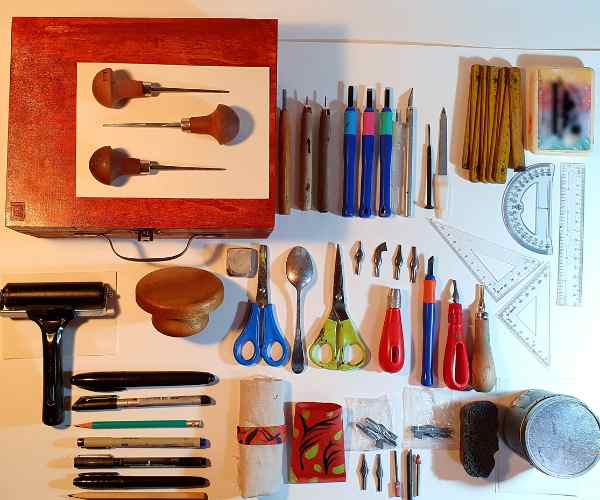Data visualization in my perspective has always had a violent impact in shaping graphic design trends.
I was more wondering over the fact how design work in general had become more engaging and remember that reading Trying to pretend more dynamic than it always was.
The entire aspect of ‘dressing up’ was rendered meaningless because the sole focus was translating raw data into an engaging visual narrative.
I remember designing mockups for a client a few years ago and the client wanted some feature for displaying their business metrics somewhere.
My first thoughts were, “How could numbers be engaging?” But then I slowly got into the concept of data visualization and things started making sense.
Graphs and charts were one aspect of it but the focus was to design for the scope.
People were able to comprehend the data, and it was easier to digest on a broader spectrum which interlinked all the disjointed pieces of information into an cohesive outline.
Data visualization has completely changed the design industry and made it more personal as it addresses a very primal instinct, the urge to quickly grasp and comprehend a multitude of information.
No longer would you gather a few pie charts and call it a day. Currently, every designer is expected to extend boundaries and use data in an emotional and visually appealing manner.
This article will see how graphic designers are learning to use data visualization techniques to advance their craft.
Visual communication relies on graphics, including but not limited to infographics and interactive dashboards to present information in an easy to digest manner. We’ll analyze how they create effective design.
Most importantly, we’ll analyze the underlying reasons why data visualization is so vital to the work graphic designers do.

The Rise of Data-Driven Design
I think it’s safe to say that in today’s world, data is all around us.
Whether it’s the steps we take daily or the shopping behavior of the whole country, data is being generated like never before.
But what really is so interesting is how the designers are utilizing their creativity to sift through all this information.
Data-driven design implies transferring the role of data from a mere analysis tool to an element of design.
I remember having a client working with a fitness app and they wished to feature their user stats on their annual report.
Initially, it appeared to be tedious—how on God’s green earth do you convert statistics into something that is aesthetic and still retains the information you need to convey?
And then it occurred to us that there is value in visualizing data and trends, which could portray the idea of achieving the goal of “total distance covered” or “total calories burned“ or simply showing improvement like “over the period of time“.
That’s when it became,oste clear, it is not about the charts, numbers and graphs, rather about narrating the picture data presents.
Presenting data in a simple and concrete manner has now become an acceptable story telling technique that businesses employ in order to connect with people emotionally.
This is especially true for Spotify, for example, which uses data to explain how much, when and why a user has listened to a particular track.
It’s a wonderful demonstration of how engaging with data visualization transcends the figures involved and explains how engagement is achieved from the numbers.
We’re in a situation now where the capacity to outline data or any information in an interesting way makes a company stand out.
This differs from just displaying the data, but goes further to say about how the data is presented, how it is going to appeal and educate and even more importantly to make an impression.
This is also the reason why such a practice as data driven design is gaining such a pace in the area of graphic design as it is nowadays.
Data Driving Design: Where Infographics Moves Beyond Data Visualization
Infographics have existed for ages, but they are hardly old fashioned.
In fact, they have been regarded to be amongst the most influential aids in a graphic designer’s “toolbox”.
Why? Because they supplement raw data and more creative visuals.
I still remember the very first infographic I developed in relation to a campaign.
As part of the project for an environmental firm, I had to assemble a sustainability report and the aim was to portray carbon emissions and waste reduction and recycling rates data.
When the figures were taken on their own, they were just, overwhelming. But when we converted them into visuals, they all started to make sense.
It turned out to be interesting, I began to think about how I can express ideas about this information to people who view my infographic.
The great thing about infographics is that they can distill complex and heavy information into something much more simple and easy to understand while also making it appealing to the eyes as well.
Infographic usage is growing in popularity and can now be seen on both social media and business slides alike.
This fusion of information and artistry is what infographics are best appreciated for and why they’re able to reach and appeal to a wider audience.
One can use infographics to tell a tale sprinkled with actionable data and stunning visuals – from making sure key metrics are painted in bright colors to adding an icon to signify a metric.
When it comes to grabbing a viewer’s attention, infographics are great since they’re able to maximize a person’s ability to understand and retain information all at once.
Interactive Data Visualization: The Next Generation of Engaging Experiences
Recently, interactive data visualisations have gained a lot of traction, and there is clear evidence as to why they became so popular.
Data isn’t something you just look at, it’s something you get to touch and get hands-on experience with. At least, that’s what most people want to do with it.
Data interactive features allow consumers to experience the data like they never have before by breaking away from using static images.
I vividly remember designing a tech firm’s interactive annual report project.
Instead of simply presenting them with a report, we developed a dynamic graphical interface that focused on aspects such as revenue increase, user information, market statistics, and much more. Users were able to click to obtain the information they desired.
The interaction we witnessed from that was astonishing. The users engaged in many more activities within the report since they were able to go through information that interested them the most.
Maps and charts or animated graphs that tell a story out of pictures are becoming quite popular because they serve up what plain photographs cannot, personalization.
It is more about letting the user decide how to view the data gathered and not only about displaying it.
This form of interaction can be remarkably and immensely useful, in marketing and education for instance, where data should not only be accurate but also entertaining.
As a result, whether you are building a report, a website, a marketing campaign, or a presentation, the use of interactive data visualizations can enhance participation.
It changes what was once a passive activity into an active one; data becomes something you interact with, not just something you watch.
Emerging Trends in Graphic Design with Data Visualization
I cannot stop thinking about how powerful it is to use data visualization and graphic design simultaneously because minimalism and data visualization come together perfectly.
The use of minimalist design is really an effective way of making the crucial features stand out in a world that is noisy and over-crowded.
This, in my opinion, would be very useful for data visualization for it makes information more comprehensible especially when dealing with figures and statistics.
A few months ago, I worked on a website redesign for a financial services company.
Their previous site was full of dancing elements, visual noise of detailed backgrounds, and everything ultimately resulted in thousands of charts to be displayed on a single page.
It was soon clear that removing the design clutter and directing attention to bare bones data would enhance the experience for users.
As soon as we trimmed the design back to essential visuals – the geometric shapes, emphasis on whitespace, and stylish fonts – and applied them in a manner that the data had room to breathe, the results were astounding.
The case was not not just in terms of the numbers and graphs being clearer, it all being about fitting the picture into context.
Sleekness is not the purpose of minimalism, but rather clarity.
In the case of data visualization, this means reducing the number of elements but ensuring that each element is of quality.
The aim is to ensure that the content is comprehended by the user with a couple of quick glances.
A good example to illustrate this would be when you add a minimalist approach with a lined graph, the graph is all you need.
So, it is all about optimizing the visual aspect while still allowing the data to give a clear message to the audience.
Bright Visuals: Telling A Powerful Story With Data
Another technique which visual designers are apply to improve the data visualization is, bright visuals: bold colors and typography.
All of these do not only help to make the visuals appealing whence used in the right way, but also directs the audience’s focus towards the salient details of a piece of information.
For instance, I once held an online internship in a Non-Governmental Organization whose goal was to demonstrate increased statistics for the past ten years through different forms of media.
The data they provided was there to impress, however, at a first glance, I was not convinced as it appeared to be dull.
That’s how the panels and attendance were all colored and arranged.
Consequently, the story we wanted to convey became more widely known thanks to the combination of statistics and color schemes, including the amount of money earned and the number of lives saved.
Once again, the cases featured bold typography, and the centre tacked on number visuals.
Here is the thing, it’s better to strike a good balance. The absence of it leaves one’s message diluted and impaired as there is too much color incorporated or excessive and ambitious typography is employed. They aim to amplify the data rather than hide it behind their work. Modern designers are making use of vibrant colors and typography in their image visualisation in efforts to make insights more powerful in changing what the readers focus on rather making them more passive. One of the most novel features in image visualisation technology is the capacity for motion graphics to assist in and animate the numbers. I recall working on a project that aimed to illustrate the increase in the value of a technology business in five years. A graph would almost certainly have been acceptable, but with the data moving and being dynamic it really helped cross so many barriers. But rather when one adds motion to their image, it aids in inducing the opinion of the person that is viewing it envisioning it more deeply. They become involved in the act, rather than simply staring at a graph and gleaning information from it, they can view the graphs evolution as it alters. We used the revenue spurt of the company due to critical points as the base to animate a graph showing the increasing revenue. It created a better storytelling for the data but made the data even more interesting to understand.
Motion graphics allow designers to lead the audience through the information in an interactive manner. And speaking of interactivity, one can make animated transitions between data points to demonstrate how things looked then and how things look now under different categories. It is useful in instances when one needs to showcase progress and compare things. Motion graphics are extremely effective in ensuring the audience’s attention is captured and retained in this era of shortened attention spans for which most things are now digital.
Real World Uses of Data Visualization in Contemporary Design Branding and Marketing: A New Era for Data-Driven Storytelling Data storytelling has emerged as an important factor when coming up with branding and marketing strategies. As of today, there’s a realization from several companies that data can aid them in telling stories better And the prominent brands such as Spotify and Google are the ones taking the lead. Let us begin with Spotify’s “Wrapped” campaign. Every year, the users of Spotify get really exited about seeing a customized and visually appealing summary of their music consumption habits over a specific period. They are presented with vibrant and visually appealing data visualizations that illustrate to them how their music consumption evolved and transformed throughout a specified period. It is entertaining, engaging and above all, it is personal. The wonderful part about this is that Spotify is not collecting random data and presenting it, they rather use it to emotionally connect with their users. It is the best form of data-driven storytelling. Another brand, Google sometimes even uses data to supplement the stories they want to give.
Real time worldwide data where places and events are selected is made available by google trends for example. It can be seen as an insight instead of information as it is both relevant and presented well enough for a user to grasp the concept. This is astonishing for marketers and designers as the opportunities provided are infinite. This helps tell the brand’s story resulting in easier interaction with the user which in return helps the message become impactful. Multiple pieces of statistics combined can be used for improving user experience through a unique interface and experience aiding design. I am a UX/UI designer, hence I can verify that data visualization is indeed very necessary and pivotal to UX/UI. Over a year ago, I joined a team whose goal was to improve and modify the interface of a mobile application aimed at tracking the user’s activity. The harder part should be presenting the user with all this information — whose steps, heart rate, the number of calories burned. This was the moment when I understood that effective visualization, which is relevant to the user, will improve their experience by providing the information in a clear and logical way. We developed a dashboard where a person could see and understand all the information about his daily indicators. To represent how the user is progressing towards their goals instead of fancy charts, simple rings were utilized which were colored green, yellow and red depending on how close they were to their target. Overall, it was simple and efficient.
To enhance experience through UX/UI design, one should keep in mind the seamless integration of data as that is the trick to achieving success in design.
Regardless of if it is progress bars, interactive features or charts, all data is meant to direct the attention of the user rather than perplex them.
Good data visualization is imperative as it streamlines the user experience with the interface to ease the delivery of information.
Engaging Users Through Social Media: Graphics That Drive Interest
The usage of data in social media is multi-faceted, and data tools enable effective engagement and interaction within one’s posts.
Fueling engagement with posts on Instagram or Twitter can be done through the use of well crafted and data driven graphics and I can assure you with great confidence it works as a user.
A client once reached out with the agenda to develop a social media campaign that would promote sustainability and that is the sign we received.
The response for us creating a few infographics to showcase the importance of recycling was overwhelmingly positive.
It generated an impactful response since the visuals were packed with data but were also easy to create and colorfully exaggerated so they would stand out.
And that is the point of social media visualization, the graphics do not get scrolled past, they start discussion and get shared.
It becomes significantly easy for people to share the post as the visuals designed effectively present the information in a condensed format to encourage engagement.
When you are able to create value- graphics that are educational, entertaining, and informative all at once, then your data driven graphics have a strong edge.
It is easy to understand how brands that leverage data and use it in their social media can build content which is not only attractive but creates engagement as well.
Data visualisations work better to show important aspects of a brand in a more attractive format and as a result interaction increases along with sales when they are used correctly.
FAQS
What is data visualization in graphic design?
Graphic design data visualization is the means through which large complicated sets of data become digestable visual information for instance charts, graphs, infographics, or even interactive dashboards.
As a designer, has always been a visually pleasing process taking raw numbers and turning them into information that is more user friendly and easier to understand.
It is fascinating how once something which appears complex on writing or spread sheets is beautifully and easily comprehended in a graphic.
Consider an illustration in which large unwieldy data dominated a dense report converted easily in an elegant summary so anyone can understand it.
For example while working on a sales project of trend visualization, I remember needing to depict sales’ patterns across different points of time.
Instead of bombarding the viewer with endless data points, we decided on a more effective approach: a dynamic line chart portraying the fluctuations in sales growth over a period.
The visual representation could narrate the theme more beautifully than words or and figures ever could!
Why is data visualization necessary in regard to modern graphic design trends?
Data visualization has become a hugely popular trend in graphic design because it enables designers to relay a high volume of messages in a remarkably short period of time.
As people, we are quite visual oriented and in this current generation of speed, when people lack the time to go through a textbook, this becomes crucial.
You do not simply present data; instead, when you present data visually, you are presenting an idea, an imagination, an understanding of the story in broader details in a specific period.
I have personally experienced how an infographic or data visualization can effectively focus new vision on the already known problems in the economy.
Once, I worked on a social media campaign that was aimed at promoting an understanding of the global consequences of plastic pollution.
The statistics itself was quite astonishing but more the picture on the rate at which plastics are dumped into the oceans, just about every minute, was much more so.
Because the information was presented in an engaging and simple manner, it was easy to get the point across.
In what ways can graphic designers use data visualization?
Graphic designers have so many different and exciting opportunities to incorporate data visualization into their, already, existing work.
Infographic design is one of the most commonly used ways to convey complex information in a way that is more visually appealing.
Creating infographics has always been a fun process for me, as it provides an opportunity to work with design elements such as typography, icons, colors, and layouts alongside data.
If you are creating an infographic on global warming, for instance, you could use a gradient coloring scheme to display how stats on average temperatures have changed over the decades.
A good alternative also includes interactive charting and dashboarding tools.
I remember working with a client once who wanted to showcase live sales data on their website. We therefore made a dashboard where the users could click on the sales KPI’s and different categories.
In fact, aside from making the data more interesting, this also enabled the users to engage with it and find exactly what they were looking for.
Due to the fact that the interactive components make data not only educational but also enjoyable to use, people prefer this form for presenting data.
Even though it is now clear that growth in data visualization is taking place, it is still extremely fascinating to see how the tools of a designer are undergoing change. Widening of the Visibility of The Visualization Tools has recently become a trend that has gained momentum. Instead of making the graphics too flashy, it is important to keep them clean especially the visuals wherein simplicity is the key. I am always baffled at how even the most intricate datasets can be made so relatively straightforward with the aid of a metrical tool.
A simple bargraph well sculpted in white space may occasionally outclass a developed product in terms of how powerful it is. Another trend that I have seen is the use of bolding over important insights that drive data conclusions. With the use of contrasting colors you can cover the most important parts and leave out the rest such as the case for developing graphics. I gave graphics a shot when we were team builders of a tech company and when we painted certain business models unto partially black menus it helped capture the attention of the data and drive the emphasis where it mattered.
Other elements that are Capturing People’s Attention are Interactivity to drive the point and the message across Politics As Usual.
Whether it is hovering over a chart to gain further information, or going deeper into data visuals, people are looking now to be engaging with content.
In UX/UI design, it is important that user experience is dynamic and engaging and this trend turns out to be useful for that.
Conclusion
With the inclusion of data visualization, a new dimension has been added to graphic design and I have experienced the impact of it through my work.
Data is no longer considered to be an assortment of numbers, it is now dealt with as a fundamental element that can be constructed into a visual narrative.
Regardless if you are developing an infographic, social media or an interactive dashboard, the ability to convert numbers into visuals is a great asset to have.
These trends allow designers to be more creative which I personally think is the best element about them.
You are no longer simply designing things for the sake of beauty, you are designing for engagement and interaction which is much more complex.
Staying up to date with such trends is very important and let’s be honest no one likes to be behind the times.
In case you still don’t understand it, allow me to spell it out for you: in our time, a designer cannot do without mastering the skills of data visualization, it is not a desirable supplement, it is a necessity.
In doing so, start by integrating the aforementioned trends into your work. This will ensure that your designs leave an impact while still appealing to a modern audience. In other words, make sure that your work is up-to-date.
Well, welcome the changes, never stop trying new things, and look for better ways to make data more understandable!






